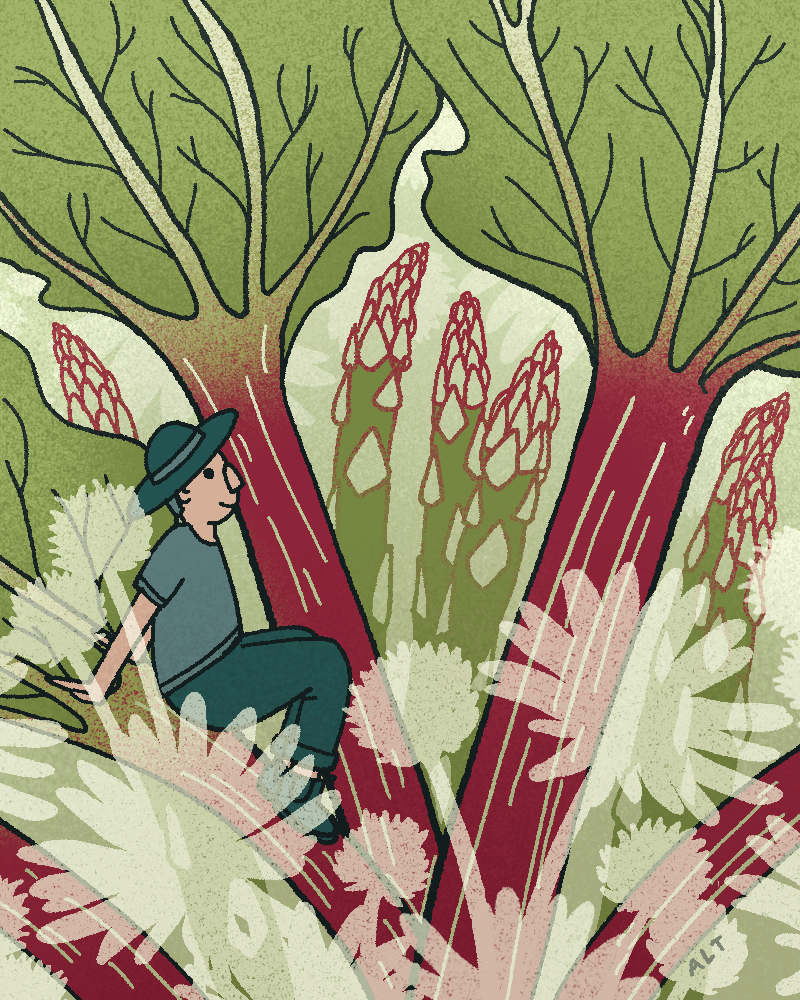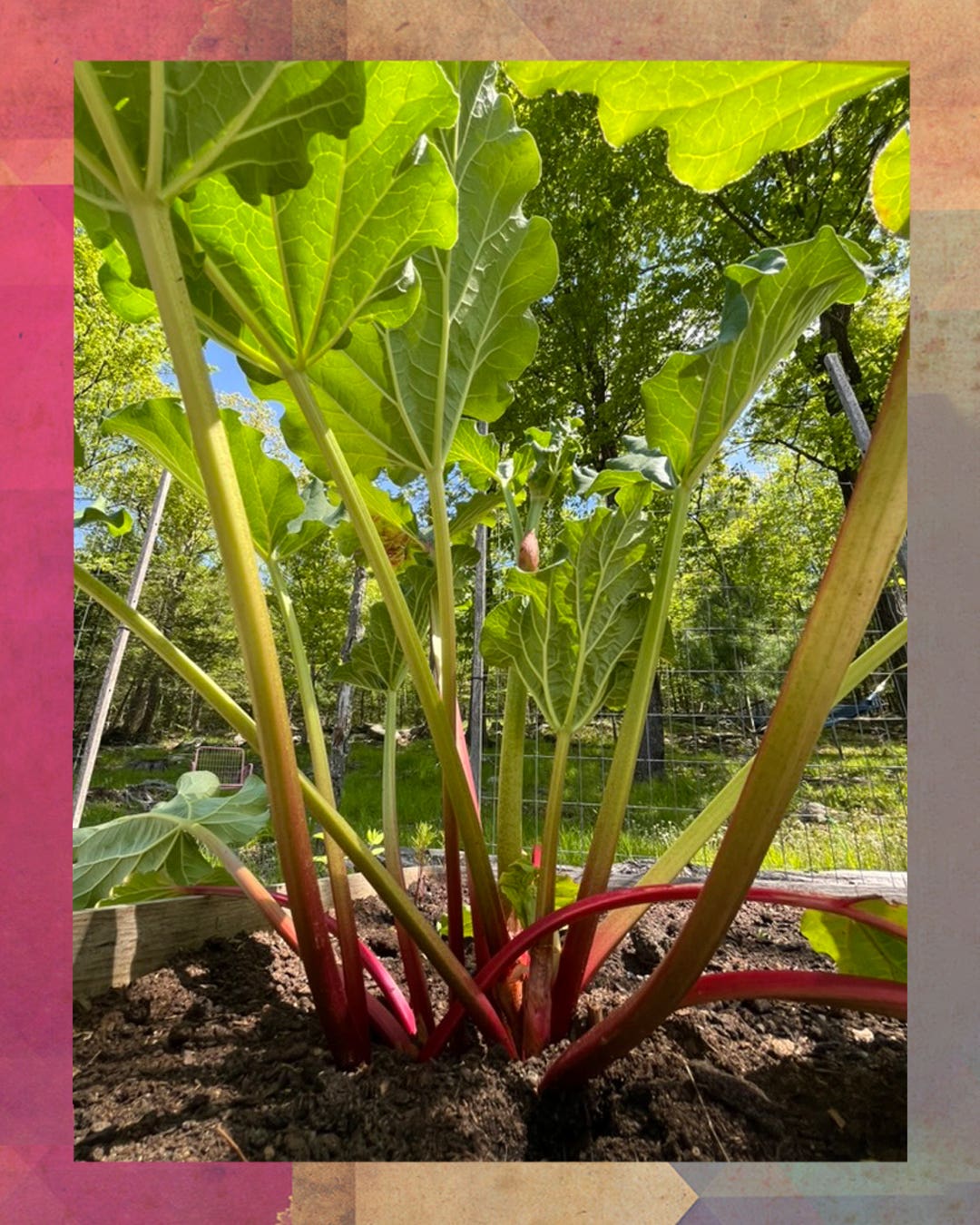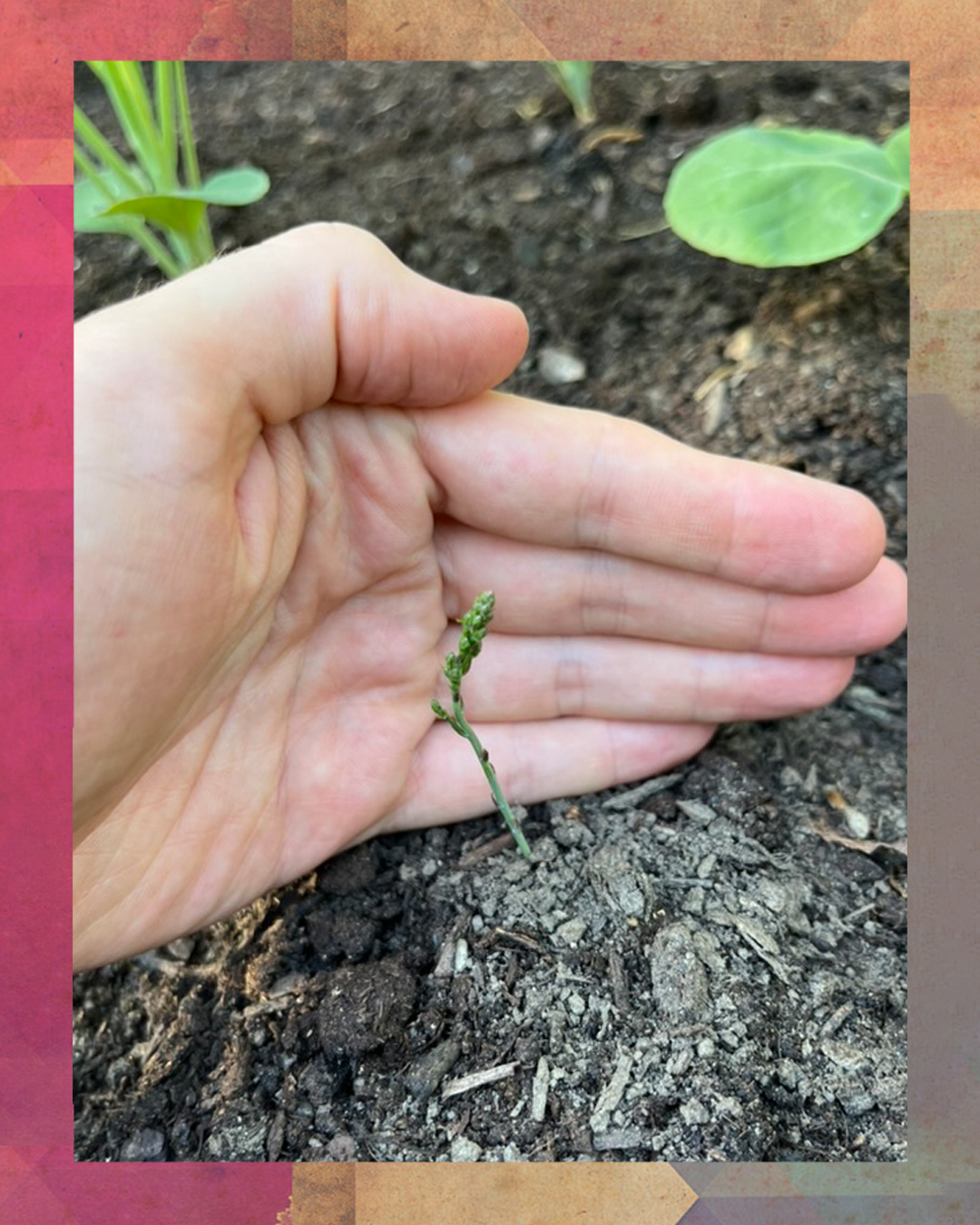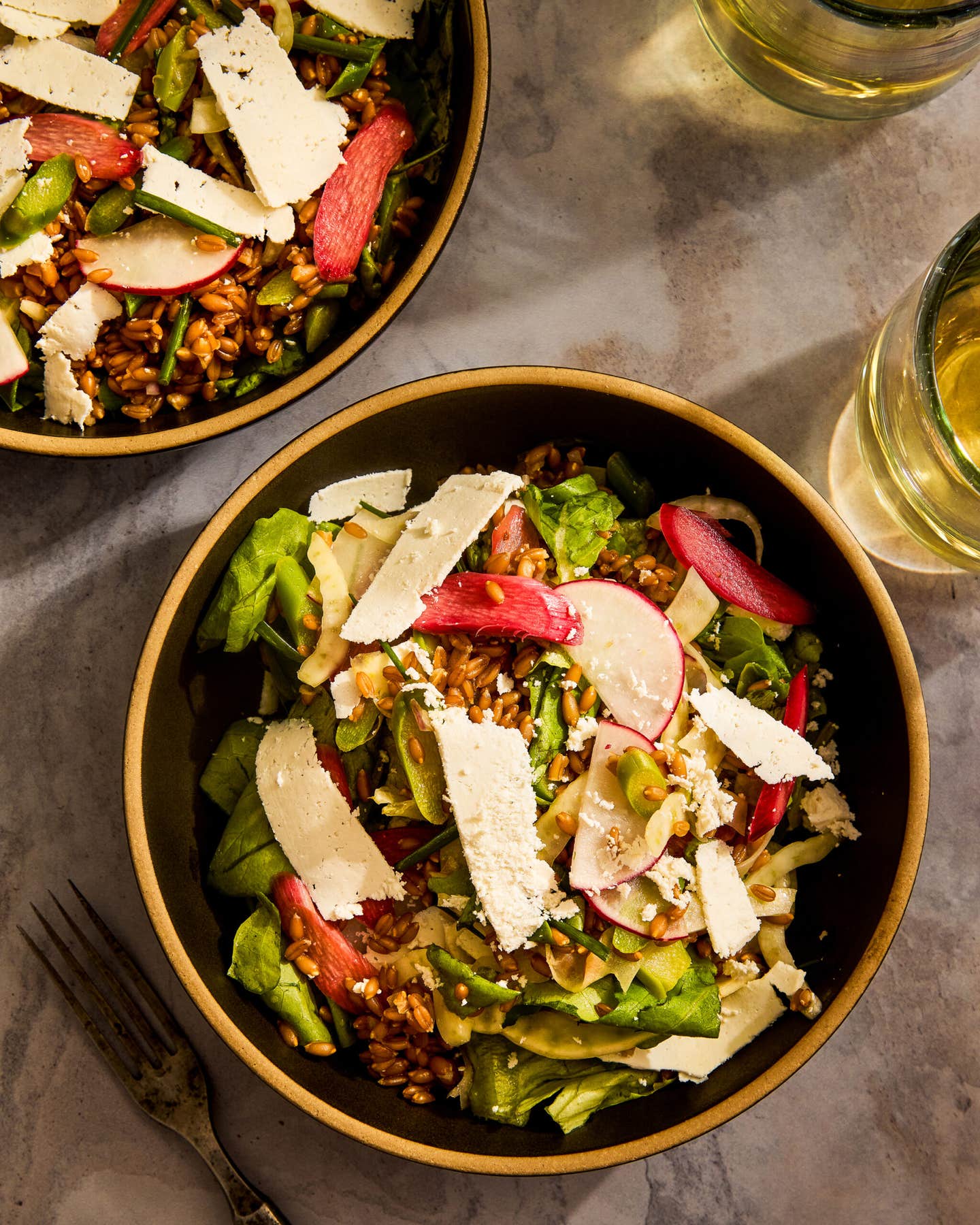For a Low-Effort, High-Reward Garden, Plant These Perennial Vegetables
Seasonally recurring edibles will help your garden grow itself.

Plot to Plate is a SAVEUR column in which features editor Alex Testere exercises his green thumb, sharing practical gardening tips and seasonal produce-driven recipes from his patch of earth in New York’s Hudson Valley. He is also the author and illustrator of Please Grow: Lessons on Thriving for Plants (and People).
Gardening, by nature, is not a pastime with swift rewards. If a trip to the farmers market is a cut-and-dried game of Go Fish, where the rules are clear and victory is simple, then growing your own produce is The Settlers of Catan, an afternoon-spanning exercise of shifting landscapes, variable resources, and tedious, long-haul strategy. Its perks come with patience, and thankfully, most of us are in it for the process just as much as we are for the harvest.
Playing the long game can be challenging; without knowing precisely when the rewards will come (or what shape they will take), it can be hard to find the motivation to do the work in the first place. It’s akin to trying to establish a daily workout routine, or setting aside money for retirement. On a much smaller scale, I feel it whenever it’s time to make a fresh jug of cold-brew coffee: My instinct-driven brain bristles at setting aside even 10 minutes of my day that won’t be paid back until later. But by the time I’ve poured myself that cup of iced coffee 24 hours later, the work that went into it is a distant memory, and all I feel is that cool, sweet reward. The same principle applies to garden perennials—except the returns can be even greater, with years upon years of edible rewards to reap down the line.
A botanist would say that a perennial is any flowering plant that lives longer than two years. While annuals flower and go to seed in one season, sowing the next generation before they die, perennials have a structure, typically the roots, designed to survive a dormant period, allowing the plant to grow again when the season is right. A plant’s ability to reemerge largely depends on the climate: Some tomato vines, for example, can live for several years in their native habitat in South and Central America, producing fruit each summer, but gardeners in the North typically grow them as annuals, discarding or composting them after their fruiting season has ended. From a practical standpoint, what counts as a “perennial,” is less a question of the plant’s habits and more a question of the gardener’s. For me, a perennial is anything that’s going to continue to blossom year after year—and which I only had to plant once.
Flowers get credit for most perennial payoffs—coneflowers, roses, peonies, and hydrangeas delight growers each summer with their blooms, becoming more abundant each year as the plant matures. A thoughtfully planted perennial flower bed can bloom for decades with relatively little tending. But what about a perennial vegetable bed? What edible plants can gardeners expect to provide a recurring, low-maintenance harvest? In the spirit of delayed gratification—and of encouraging my future self to do as little work as possible—I want to fill my garden beds with perennial vegetables this season. Here are a few suggestions for edible plants that will continue to provide for years to come.

Rhubarb
Originally hailing from mountainous Central Asia, rhubarb is one of the few edible plants that really requires a winter chill in order to produce well in the spring, something that gives me a smug sense of superiority over my gardening cohorts in sunny, mild California. (No offense to California, but you get to have literally everything else.) I planted rhubarb in my garden two summers ago, and this year was its first really vigorous showing, with a dozen or more tender, pink stalks poking up in the spring that took absolutely no effort to achieve.
Sunchokes
This perennial member of the Helianthus (sunflower) genus is native to eastern North America, where Indigenous people have cultivated their delicious, potato-like tubers as a food source for centuries. They are also known as Jerusalem artichokes, despite having no connection to either; a likely example of linguistic corruption of the Italian “girasola,” or “sunflower.” Sunchokes grow like weeds, and can be difficult to contain if left to grow wild, so plant them in a place where you can keep an eye on their spread. The tubers also happen to be accompanied by the cheeriest clusters of yellow flowers, a win-win in my gardening book.
Horseradish
Another perennial prone to spreading, horseradish is in the Brassica family—along with kale, collards, cabbage, and broccoli—although its emphasis is on the root rather than the greens. The piquant vegetable, which grows in expanding, rooty clumps, is a zesty addition to creamy sauces and sandwiches, and, as long as you leave a section of the root in the ground, it will continue to grow anew each spring.
Scallions & Chives
Another clumping vegetable, the bulbs of scallions and chives will expand outward over time, taking up more and more space, continuing to send up their aromatic greens. Leave the bulbs in the ground and simply cut off what you need, and the plants will keep growing. If they start spreading too much, pull them up, break them apart, and re-plant as much as you want to keep. Maintained in this way, a plot of alliums like these will thrive for ages. The delicate flowers are edible as well, adding an onion-y burst and shock of purple to soups and salads.

Asparagus
I also planted my first asparagus crowns this year, another delightful perennial that loves cooler climates. Establishing it will require some attention: The bare roots should be placed in a trench lightly covered with soil, and monitored as they take root and send up shoots, then slowly covered with soil throughout the growing season until the trench is filled in and the plants are fully settled. But by next spring I’ll have my first (small) asparagus harvest—with even more bountiful harvests ahead—and this season’s constant caretaking will be a thing of the past, wholly replaced in my mind by the verdant crunch of those first supple stems.
Berries
Much of this list includes what we would categorize as vegetables, but most berries—like raspberries, blackberries, currants, and blueberries—grow on hardy shrubs. These, like many flowering trees, can survive for decades, and will set buds on their mature branches or canes in the winter before going dormant, ready to flower and produce fruit again in the spring and summer. Strawberry plants are actually short-lived perennials, but are constantly sending out runners to create new, connected plants, which can help keep a strawberry patch going for years on end. Be warned, though—strawberries will take over an entire field if you let them.
Hardy Herbs
While many of us are familiar with basil plants wilting and withering after the first cold nights of fall, several herbs are hardy enough to survive the winter, and will live through multiple seasons. Mint—and its many varieties—does exceptionally well in colder climates, returning vigorously after a harsh winter (and will swiftly outcompete other plants if left to spread, so it’s best kept in containers). Oregano, thyme, rosemary, sage, and lavender are all perennials native to temperate climates, and some particularly adaptable cold-hardy varieties are available.
To celebrate these perennial favorites in the kitchen, I combined rhubarb and asparagus in a salad with spelt berries, which I’ve been eating a lot of lately for their protein- and fiber-rich nutrient profile and satisfying nuttiness. As tart as the rhubarb was, I found that the sharpness varied from stalk to stalk, and decided a quick pickle would give it the bracing tang the salad was craving, as well as dialing that natural pink hue up to 11. Combined with other springtime favorites like fennel, radishes, baby lettuces, and chives (also a perennial!), the effect is a bounteous one: bright and fresh, and hearty enough to call a balanced meal.
Recipe

Keep Reading
Continue to Next Story










